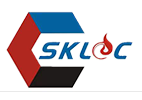
Professor
Phone: (+86)2787542417-8207
Email: sunlushi@hust.edu.cn
Academic Areas: Thermal Engineering
Research Interests: Thermochemical processing of solid fuels such as coal, wastes and biomass, Energy economy and low carbon policy, NOx and ammonia escape control technology
Academic Degrees
PhD, 2004, School of Energy and Power Engineering, Huazhong University of Science and Technology, Wuhan, China;
MSc, 1999, School of Thermal Engineering, Wuhan University of Hydraulic and Electrical Engineering, Wuhan, China;
Bachelor, 1989, School of Power Engineering, Huazhong University of Science and Technology, Wuhan, China
Professional Experience
Professor (2011-present); State Key Lab of Coal combustion, School of Energy and Power Engineering, Huazhong University of Science and Technology;
Associate Professor (2004-2010); State Key Lab of Coal combustion, School of Energy and Power Engineering, Huazhong University of Science and Technology;
Engineer (1989-1996); Wuhan Tianyuan Boiler Group Co. Ltd.
Selected Publications
1. Linlin Xu, Jie Yu, Gan Wan, Lushi Sun. Emission characteristics and source identification of polycyclic aromatic hydrocarbons (PAHs) from used mineral oil combustion. Fuel; 304(2021): 121357-121371.
2. Xin Wei, Jie Yu, Jiaxing Du, Lushi Sun. New Insights into the Pyrolysis Behavior of Polycarbonates: A Study Based on DFT and ReaxFF-MD Simulation under Nonisothermal and Isothermal Conditions. Energy & Fuels; 35(2021): 5026-5038.
3. Jiaren Chi, Ben Wang, Hong Zhang, et al. Regional coal power overcapacity assessment in China from 2020 to 2025. Journal of Cleaner Production; 303(2021):127020-127033.
4. Lushi Sun, Tao Chen, Cailing Ba, et al. Preparation of sorbents derived from bamboo and bromine flame retardant. Journal of Hazardous Materials; 410 (2021): 124583-124592.
5. Jie Yu, Esong Zhang, Lele Wang, et al. The Interaction of NH4HSO4 with Vanadium–Titanium Catalysts Modified with Molybdenum and Tungsten. Energy & Fuels; 34(2020): 2107-2116.
6. Yang W, Pudasainee D, Gupta R, et al. Particulate Emission from Municipal Solid Waste Combustion: Effect of Si–Al-Based Additives for Its Mitigation. Energy & Fuels; 34(2020): 15399-15410.
7. Tao Chen, Jie Yu, Chuan Ma, et al. Catalytic performance and debromination of FeeNi bimetallic MCM-41 catalyst for the two-stage pyrolysis of waste computer casing plastic. Chemosphere; 248(2020):125964-125973.
8. Zijian Song, Ben Wang, Wu Yang, et al. Simultaneous removal of NO and SO2 through heterogeneous catalytic oxidation-absorption process using magnetic Fe2.5M0.5O4 (M = Fe, Mn, Ti and Cu) catalysts with vaporized H2O2. Chemical Engineering Journal; 386(2020): 123883-123893.
9. Wu Yang, Ben Wang, Siyuan Lei, et al. Combustion optimization and NOx reduction of a 600 MWe downfired boiler by rearrangement of swirl burner and introduction of separated over-fire air. Journal of Cleaner Production; 210(2019): 1120-1130.
10. Jie Yu, Sheng Liu, Aderlanio Cardoso, et al. Catalytic pyrolysis of rubbers and vulcanized rubbers using modified zeolites and mesoporous catalysts with Zn and Cu. Energy; 188(2019):116117-116127.
Courses Taught
Introduction to the Subject Foundation
Combustion Theory and Technology
Energy Internet and Smart Energy
Projects
1. National Key R&D Program of China: 2019YFC1906600, Utilization and harmless disposal technology of solid waste of traditional Chinese medicine and antibiotic fungus residue, 2020/01-2024/12
2. National Natural Science Foundation of China:52176108, Development of novel mercury removal adsorbent derived from the halogen-containing waste plastics and biochar and research on mechanism of mercury removal, 2021/01—2025/12




